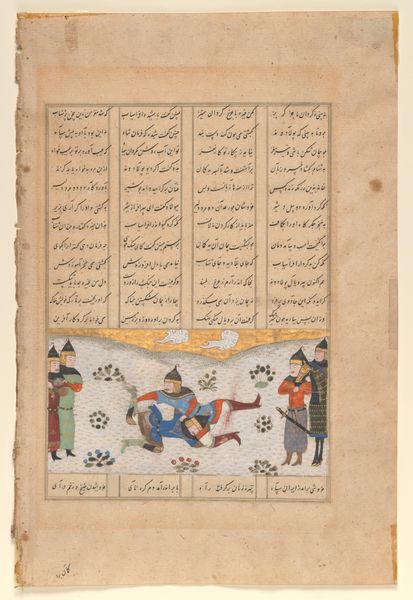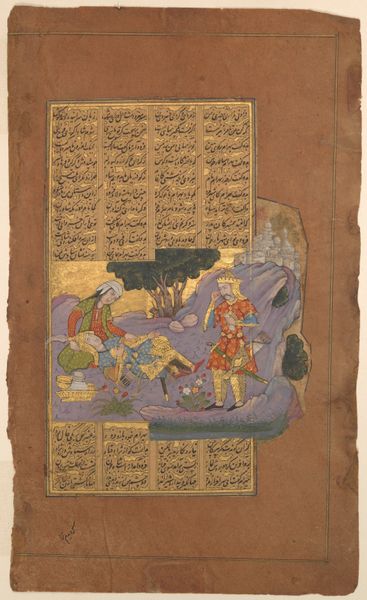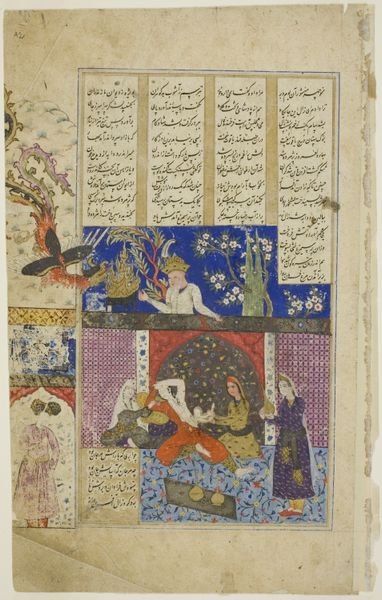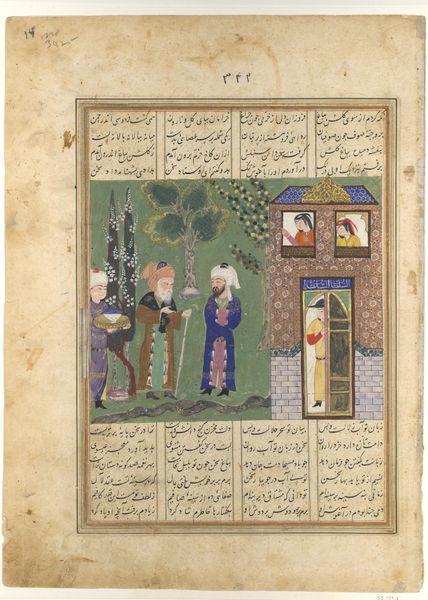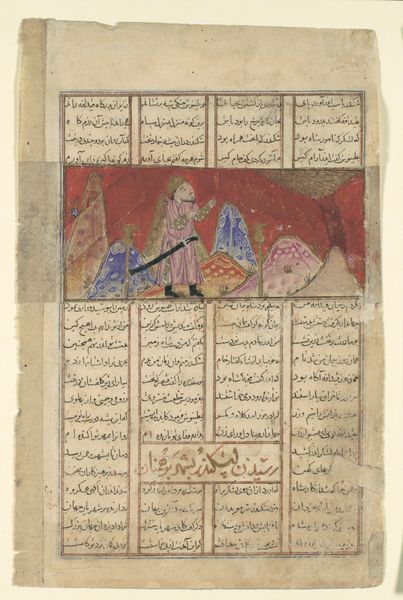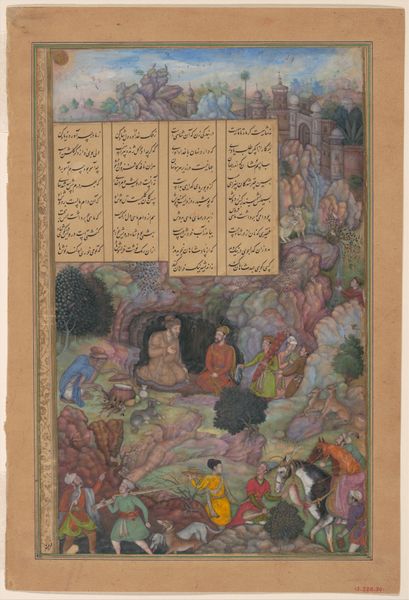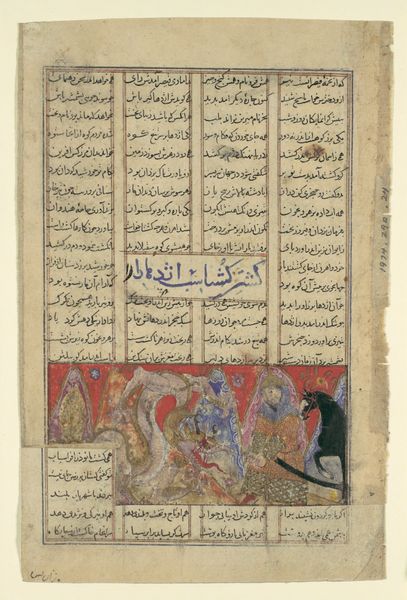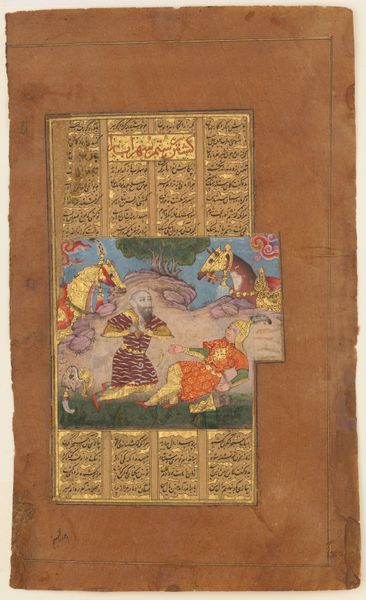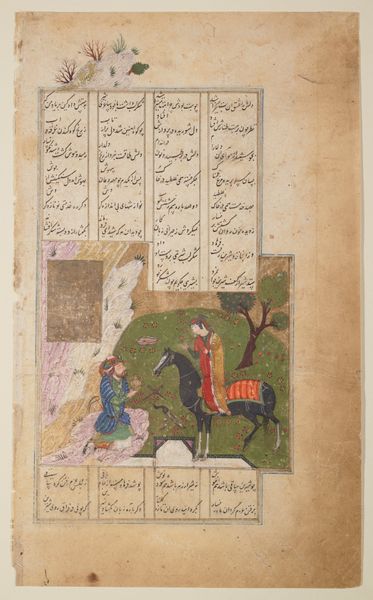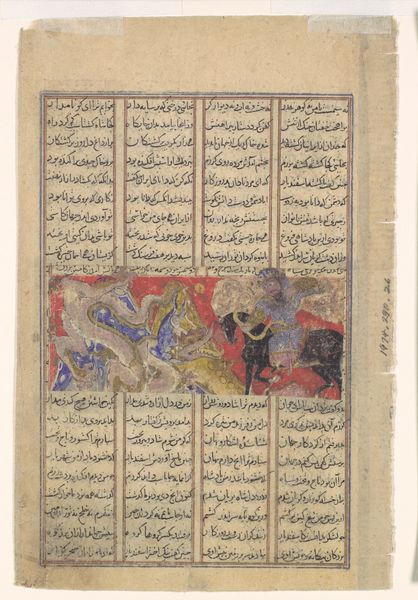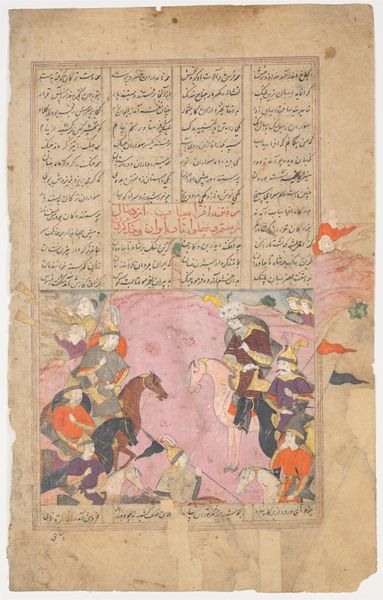
"Rustam Shoots His Half-brother Shaghad through a Plane Tree", Folio from a Shahnama (Book of Kings) of Firdausi 1457 - 1507
0:00
0:00
painting, watercolor
#
narrative-art
#
painting
#
landscape
#
figuration
#
watercolor
#
islamic-art
#
history-painting
#
miniature
Dimensions: H. 8 7/8 in. (22.5 cm) W. 6 3/8 in. (16.2 cm)
Copyright: Public Domain
Curator: Welcome. I'm thrilled to delve into this fascinating page from a Shahnama, or Book of Kings, depicting a tragic moment: "Rustam Shoots His Half-brother Shaghad through a Plane Tree". It was created sometime between 1457 and 1507. Editor: Immediately, I’m struck by the dramatic tension captured in this small space. There's this contrast between the implied violence and the stylized landscape. It's beautiful, but deeply unsettling. Curator: Indeed. As a leaf from the Shahnama, this painting is embedded within a larger narrative, steeped in Persian mythology and history. It illustrates a key moment of betrayal. The figures, though small, are meticulously rendered, with careful attention to costume and setting. Editor: The choice of the plane tree is loaded. In many cultures, trees symbolize life and growth, but here, it becomes an instrument of death, highlighting the violation of familial bonds. The almost theatrical arrangement of the characters amplifies the sense of a staged execution, rather than a fair fight. And notice the framing device, with the calligraphic text. It doesn’t just provide context, but also adds to the work's layered complexity. Curator: Absolutely. The text is crucial as it narrates the events leading up to this scene, emphasizing the pre-ordained nature of this tragedy within the epic's framework. From an art historical perspective, its position is typical within this kind of painting, the text serving both narrative and decorative purposes. Editor: Looking at Rustam's expression, you sense both resolve and perhaps a flicker of regret. This complicates the hero narrative – forcing us to consider the heavy burdens of duty and fate within patriarchal structures that leave so little room for individual moral judgment. Curator: That tension is so significant here. And the use of color, while stylized, subtly emphasizes this emotional discord. The reds and oranges associated with Rustam contrast against the more muted tones surrounding Shaghad, creating a visual separation that mirrors their divided loyalties. Editor: Thinking about this now, it really compels me to consider the agency of women and others silenced within such narratives. What untold perspectives are missing here? What alternate interpretations would radically alter our understanding of events portrayed here? It’s a sobering thought to carry away. Curator: Precisely. It also highlights the significance of historical context when we consider not just the art, but how those artworks participated in constructing, affirming, and critiquing social norms and institutions.
Comments
No comments
Be the first to comment and join the conversation on the ultimate creative platform.



